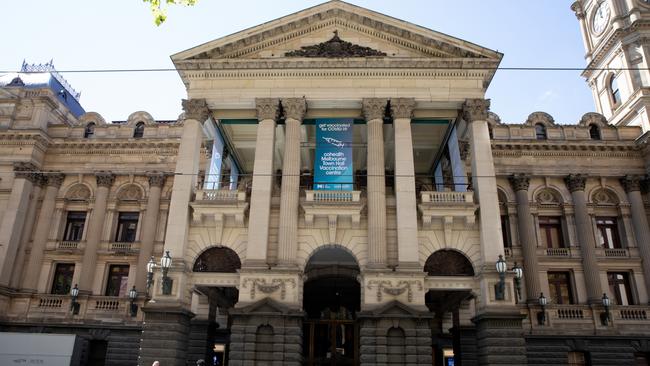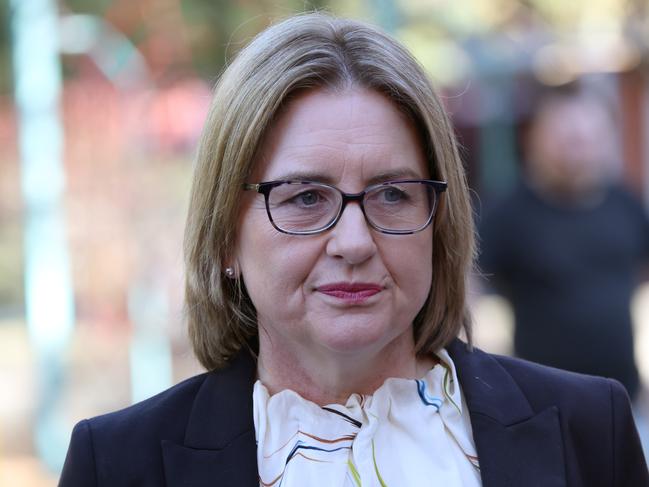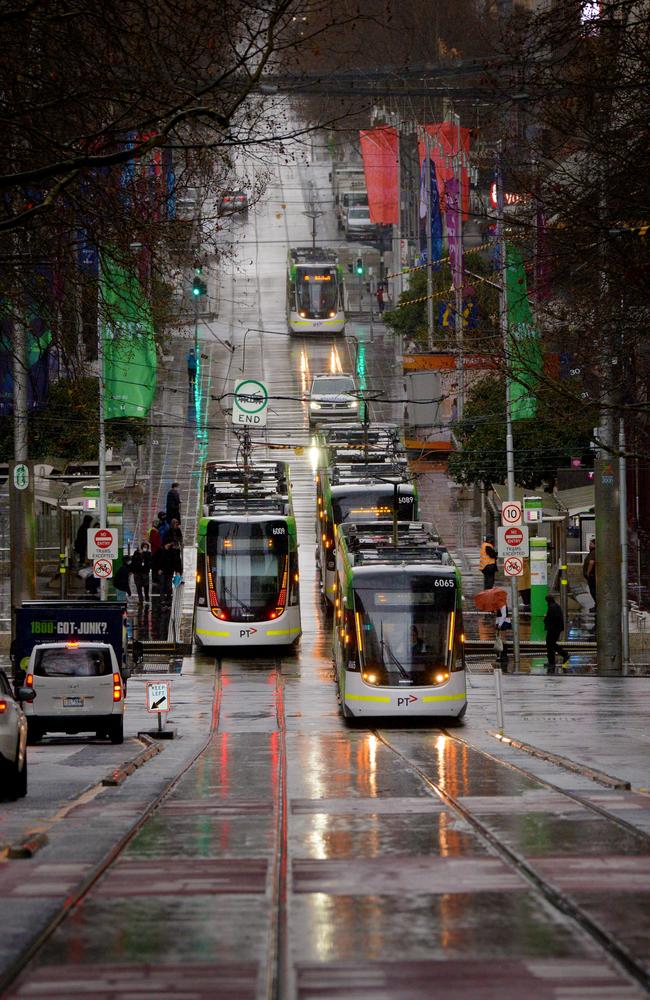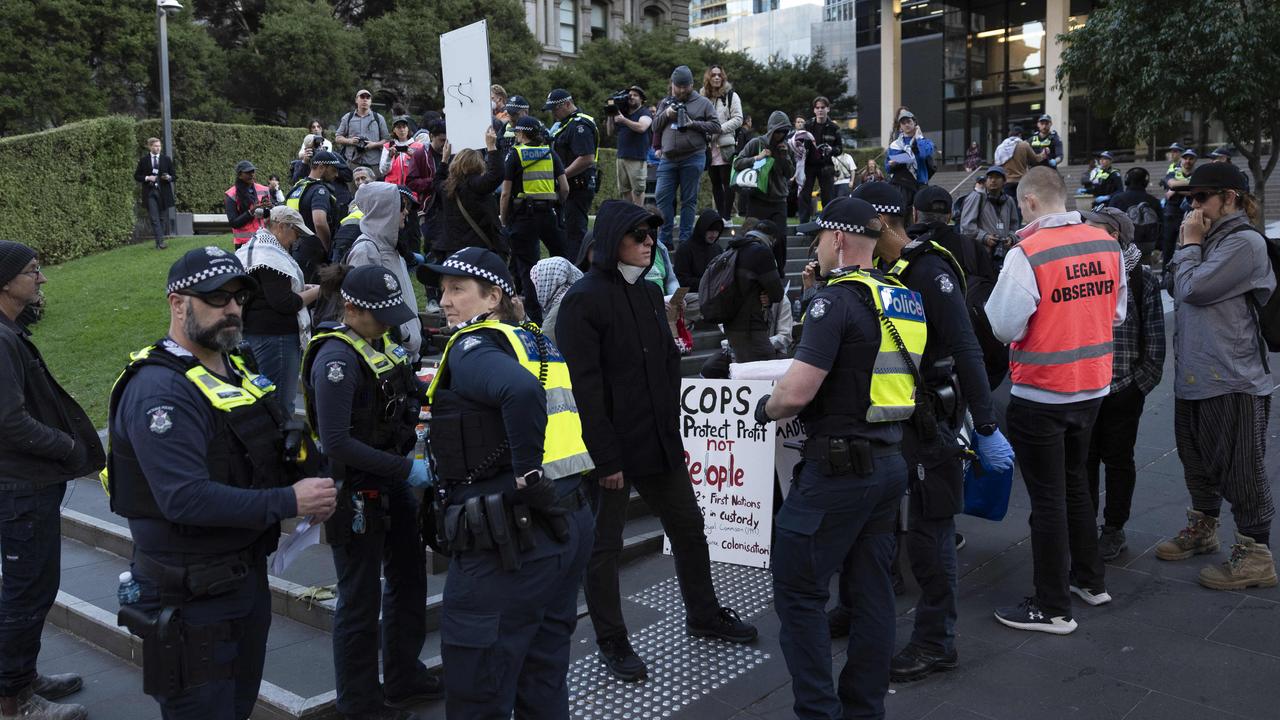Summit on future of Melbourne aims for ‘more affordable and connected city’
Underground roads, bridges with greenery and benches for chatting to strangers have been floated at a summit aimed to “shape the future” of Melbourne.

Victoria
Don't miss out on the headlines from Victoria. Followed categories will be added to My News.
Underground roads, benches solely designed for meeting and talking to strangers and green leafy bridges connecting skyscrapers were just some of the ideas to come out of the M2050 Summit held at Town Hall on Friday.
Melbourne heavyweights along with residents, business owners and students all came together in an effort to put together a 25-year strategy that would help to “shape the future of our city”.
Premier Jacinta Allan, Opposition Leader Brad Battin, Victorian Governor Margaret Gardner and other Melbourne big wigs took to the stage to speak of their future vision for the city to kick off proceedings.
Following that, attendees then got together to take part in presentations, workshops and group discussions to share and develop their ideas for the future of Melbourne.


Premier Jacinta Allan announced an upcoming trip to China when she took the stage talking about the role trade and education with that country would play in Melbourne’s future.
The Premier also stated she envisioned a more affordable and connected city in 25 years.
“ (2050 Melbourne) is one where a nurse can afford to live close to work,” she said.
“Where a student from overseas can feel part of our society, where people starting a business can connect with the world around them.”
Ms Allan’s counterpart in Brad Battin spoke of an ever growing and affordable Melbourne in 2050 — one with development at the forefront.
“I want Melbourne in 2050 to be a city where people can afford to live,” he said.
“Where there are opportunities to develop, whether that is brownfield, greenfield or infield, all the way through this city.”

But the event itself was about the ideas of the people, those business owners, renters and students who participated, and they weren’t short of them.
Last month Melbourne Lord Mayor Nick Reece said he wanted to see “the big ideas, the bold initiatives, that will secure Melbourne’s place among the most iconic cities in the world”.
One of the ideas put forward was a green wall, roof or space being a necessity when submitting a planning permit for development.

“Green bridges” full of plants and shrubs connecting skyrise buildings adding to city beauty and keeping people off the street was another.
“Chatty Benches” were another idea, specially decorated benches located around the city where people could sit if they were keen for a chat with anyone passing by welcome to join them.

Underground roads were even floated for the CBD area, a complete underground road system to keep cars out of the CBD and open up space.
Another was lowering the age to vote, which would have been of interest to the youths who also had their say of what 2050 Melbourne should look like.
The group who would be aged between 40 to 50 by the time 2050 rolls around mentioned a city “more inspired by hope than fear” and one that acknowledged the “climate emergency”.
When asked to vote at the end on the issues most important to them, attendees painted a clear picture of what an ideal Melbourne would look like in 2025.
It was one that has affordable and accessible homes, is socially inclusive, designed for creativity and knowledge, is climate positive, has reliable public transport and builds trust, optimism and hope.
The Melbourne 2050 Summit, which brought together Melburnians from across the community to share their ambitions for the capital in 2050, spruiked that greater Melbourne would keep growing to a projected to have nine million citizens by 2050, roughly the size of London today.
“We must ensure that this expansion improves our quality of life by adding to our city’s liveability, vibrancy, energy, culture, environmental sustainability, and scientific capabilities.
We will build an economy that is outward looking, competitive, highly skilled and that generates opportunity and growth for all,” a spokesperson for the City of Melbourne said.
“We will achieve this by building on Melbourne’s existing strengths: the land we share with the traditional owners; our founding democratic heritage as ‘Athens on the Yarra’; our institutions of culture and learning; our beautiful gardens and spectacular bay; our celebrated multicultural community; our literature, music, sport and major events. And most of all the strength and character of our people, our welcoming and friendly nature.
“Melbourne stands out for our liveability. For our stability. For our famed culture and events. For our open-mindedness and curiosity about the world. When Melbourne is at its best we are the greatest city on Earth.”
Originally published as Summit on future of Melbourne aims for ‘more affordable and connected city’



